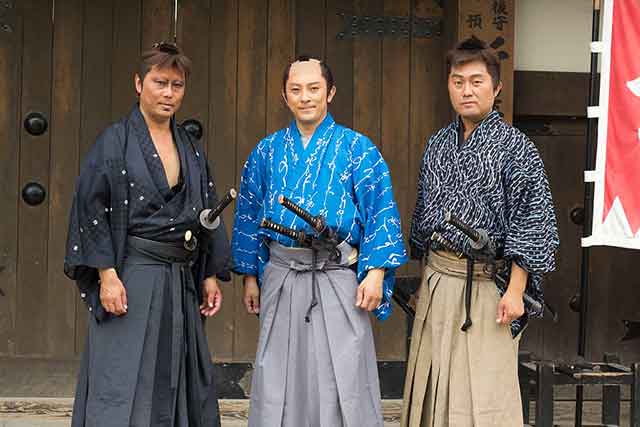
A samurai warrior must not only be strong mentally and physically, but also look beautiful. That's why his clothes are a special outfit that was chosen carefully.
Samurai casual wear
The appearance of the samurai was different, based on the situation. For example, for daily wear, clothes were used, consisting of 3 main elements:
kimono: shoulder robe;
hakama: belt element;
haori: a cape that had the same straight cut as a kimono.
All these parts of clothing were made in dark or black.
Khakami were worn over the kimono. These are trousers of a special cut, which were very similar to wide trousers. At the same time, these pants were sewn in different lengths. The length of the product depended on the status of the samurai. For example, ordinary samurai wore short khakami pants, but upper-class warriors wore elongated khakami. The pants were so long that they dragged across the floor.
In military campaigns, so that long clothes do not interfere, they were tucked into the belt or greaves.
And the final touch - haori: put on a kimono and khakami on top. Haori were sewn from dark fabrics, and were decorated with a white bow in front. A distinctive feature of such clothes was a special cut: a small cut at the bottom of the back.
Thus, khaki, complete with haori, created the composition of the solemn attire of a samurai warrior.
Formal samurai costume
When a samurai attended an important event, his outfit had a different look. So over the “haori-hakama” a tight cape without sleeves was put on. An important feature of such a cape was well-starched shoulders of large sizes. Such a cape was referred to as a "kataginu". The hakama and katagina formed the samurai's formal dress for a special occasion.
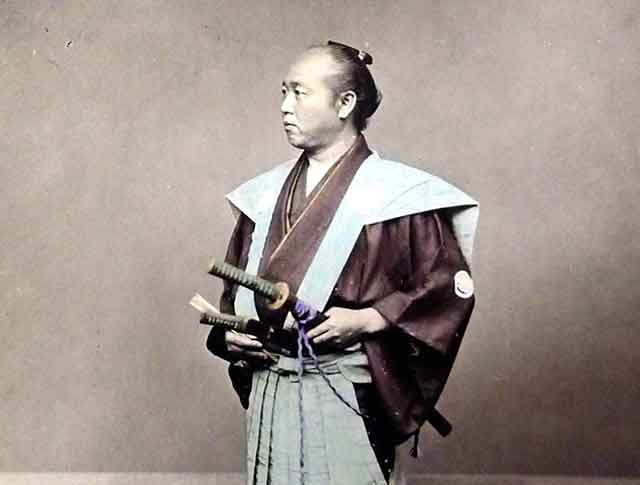
Samurai headdress
In many drawings, samurai are depicted without headdresses. However, when visiting the palace of the feudal lord, the samurai without fail put on a hat. In everyday life, many samurai wore cone-shaped straw hats. Such a hat completely covered the face of the samurai, and thus the warrior remained unrecognizable in public places.
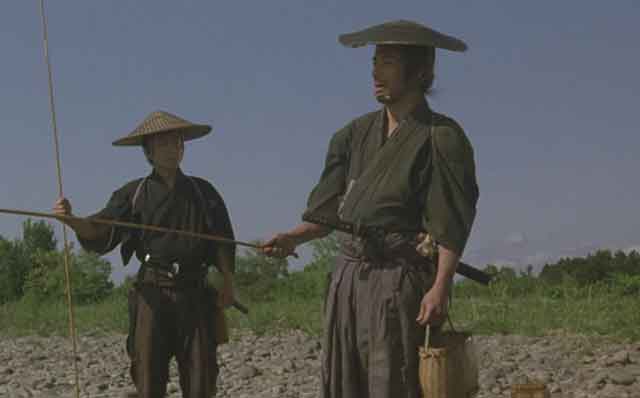
The samurai also used the amigaso straw hat, which had the appearance of a low wide cone and a small window in front. It was through this window that the samurai could see others.
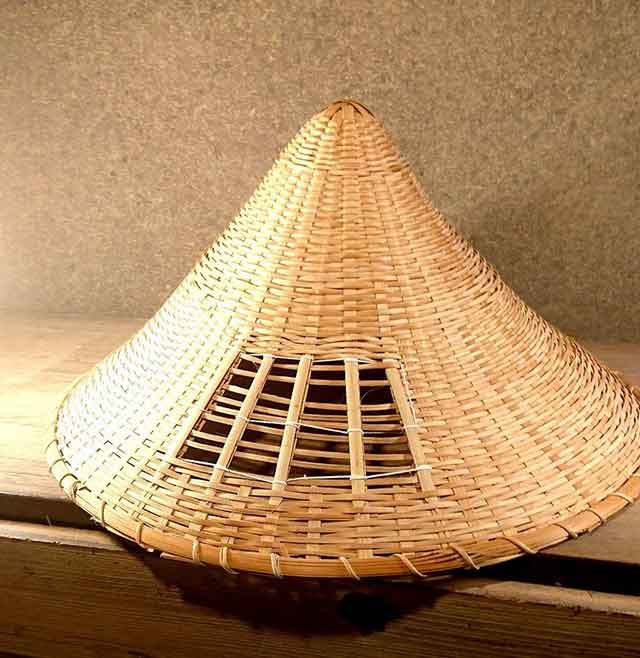
The original form was the headdress of the members of the so-called Komuso brotherhood. It was a closed fraternity of itinerant monks, where samurai were also accepted. The headdress of the members of this brotherhood resembled a beehive.
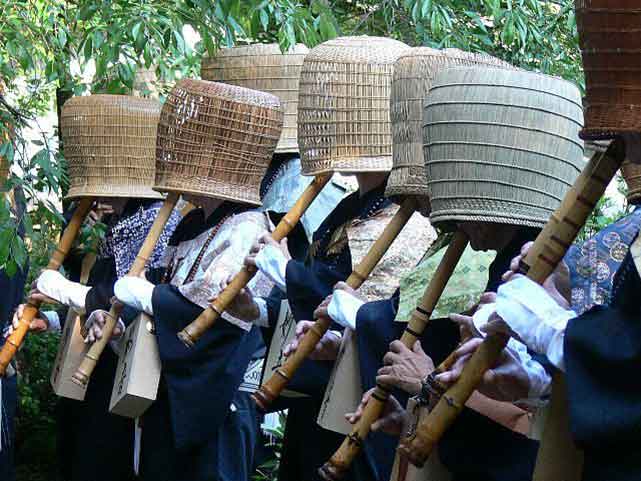
The straw hat is not the only accessory that the samurai used in their daily lives. For example, an important accessory was a wide umbrella made of bamboo and oiled paper. The umbrella was used during bad weather or active sun.
Samurai shoes
What did the samurai wear? Classic shoes are straw sandals with leather soles. They were called - setta.
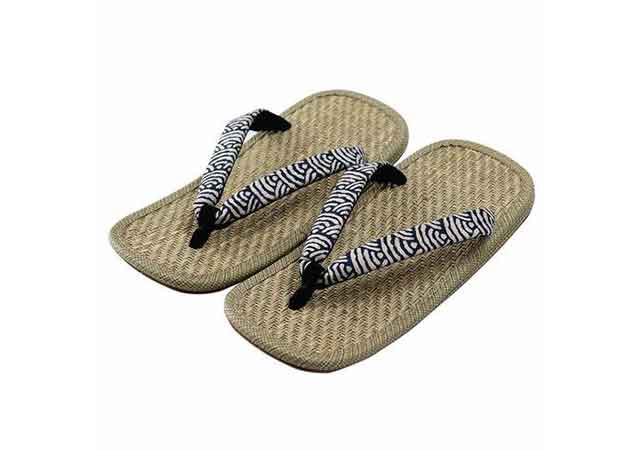
In heavy rains, other shoes were used - geta: wooden sandals.
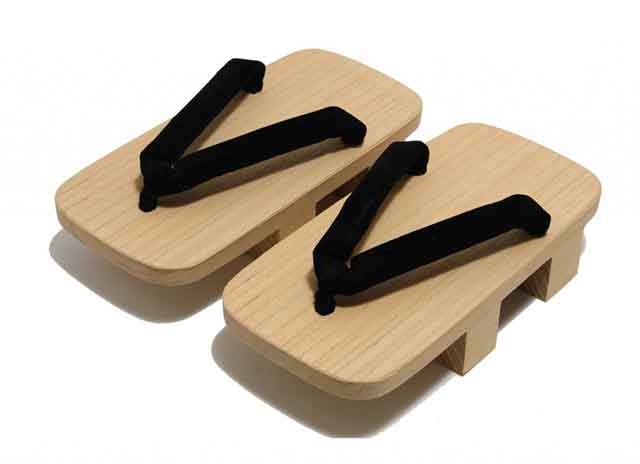
Such shoes differed in the height of the socle supports. In addition to these shoes, shields with cords were attached, which served as protection for the toes from dirt.
A very important point: all types of shoes were equipped with special straps and combined with special cut-out socks.
Family crest on samurai clothes
Particular attention was paid to the family coat of arms - kamon. For every samurai, the family coat of arms was a very expensive and significant symbol. He emphasized the lineage of a warrior and was passed down from generation to generation along with the name. Many coats of arms had ancient origins: some of them went back to the beginning of the 2nd millennium BC.
Such a symbol was applied to the upper kimono, which was worn on the lower white. This element was applied in five places: on the chest and back (front and back), between the shoulders, and also on the sleeves. However, it is not uncommon for outerwear to be completely decorated with family coats of arms. For this decor, a special paint was used. In the future, the family coat of arms was applied to other accessories of the samurai.
Regarding the appearance of the coat of arms, it was based on different life stories. It could be celestial bodies or stars, representatives of flora and fauna, various geometric shapes, elements of culture. Each element was endowed with a special magical power. After all, the coat of arms was supposed not only to emphasize the status of the samurai, but also to be his kind of talisman.
See also
-
Kokura Castle
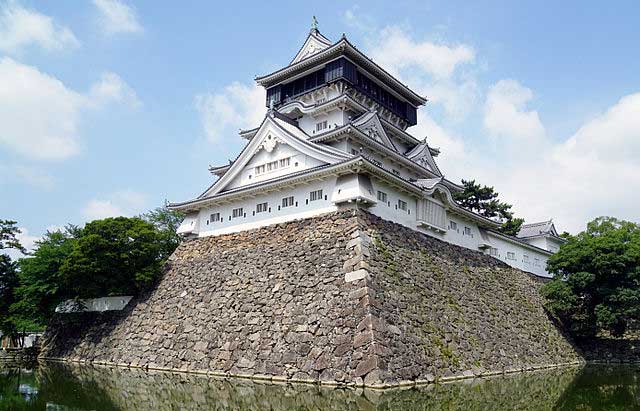
Kokura Castle is traditionally considered to have been founded by Hosokawa Tadaoki (1563–1645), although by the time the Hosokawa clan came to control these lands, the fortification had already existed since at least 1569 and was most likely built by members of the Mori clan.
-
Ikeda Castle
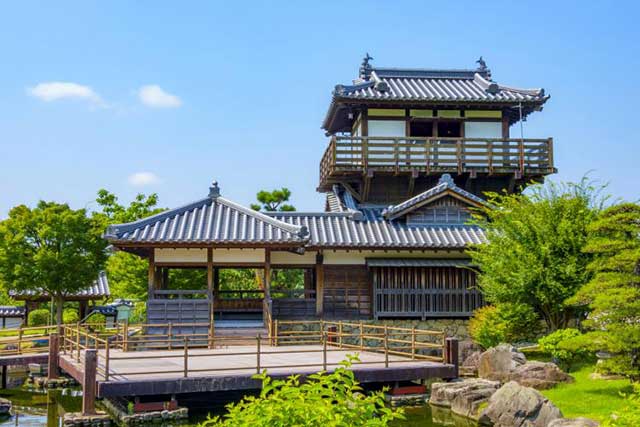
In 1334, Ikeda Noriyoshi built a small fort on this site, which over time was repeatedly expanded and rebuilt. During the Ōnin War of 1467–1477, the Ikeda clan supported the Western Coalition. As a result, Ikeda Castle was attacked and captured by the forces of the Eastern Coalition, but it was soon recaptured, allowing it to avoid serious destruction.
-
Aizu-Wakamatsu Castle
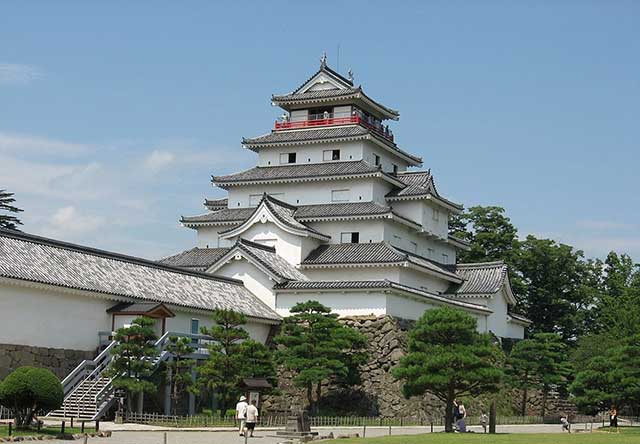
Aizu-Wakamatsu is the most powerful and at the same time the oldest castle in the Tōhoku region in the north of Honshu Island. Its history begins in the 14th century and is closely connected with the Ashina clan, whose members claimed descent from the legendary Taira family.
-
Maruoka Castle
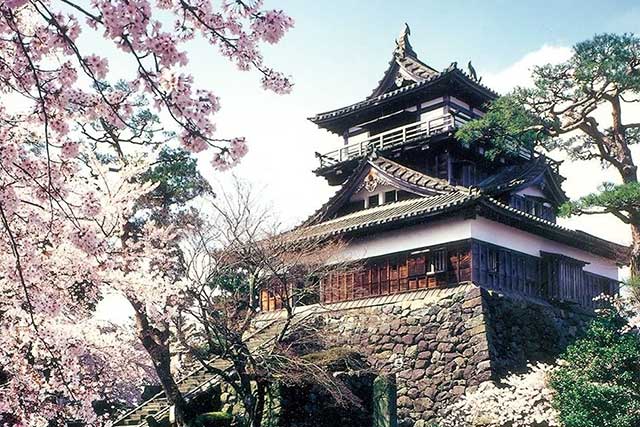
Maruoka Castle is located in the central part of the former city of Maruoka, which is now part of the city of Sakai. This area lies in the northeastern part of Fukui Prefecture. The castle was built on the bank of the Kuzuryu River, on the side opposite Fukui City, which once served as the administrative center of the former Echizen Province. Thanks to its location, Maruoka held significant strategic importance, as it controlled two major routes at once: the Hokurikudo highway leading from Kaga Province and the Mino Kaido road connecting these lands with Mino Province.
-
Marugame Castle
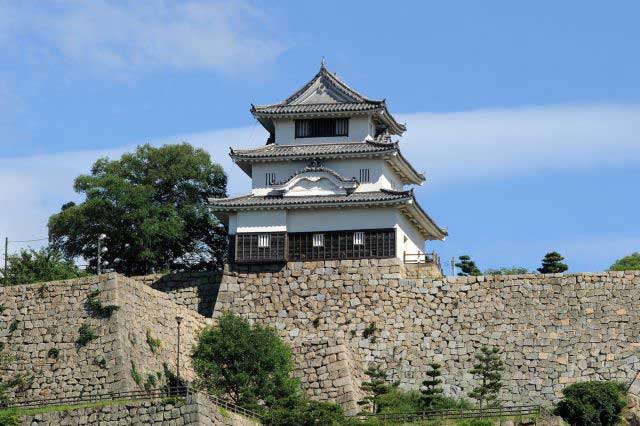
Marugame is part of the so-called “Authentic Dozen,” a group of twelve castles whose donjons have survived to the present day without major reconstructions since the Edo period.
-
Iyo Matsuyama Castle
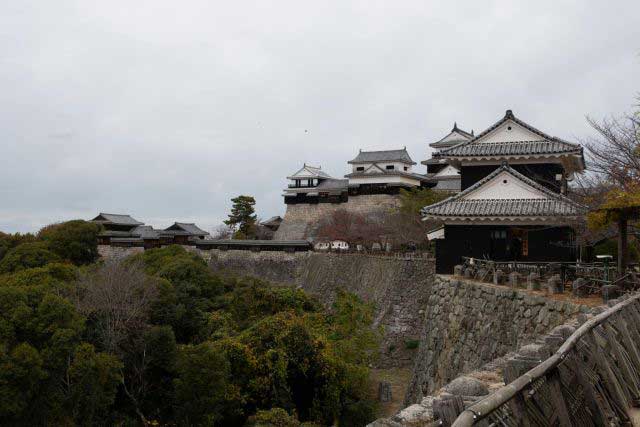
Historically, the center of Iyo Province—corresponding to today’s Ehime Prefecture on the island of Shikoku—was the city of Imabari, while the Matsuyama area was regarded as an agricultural hinterland with broad plains and low hills. During the Muromachi period, the central part of the province was governed by the Kano clan from Yuzuki Castle. With the onset of the Sengoku period, however, this clan lost its former influence and was forced to survive in the shadow of the more powerful Mori and Chōsokabe clans. After Toyotomi Hideyoshi’s forces conquered Shikoku in 1587, the northern part of Iyo Province was granted to Fukushima Masanori, one of the so-called “Seven Spears of Shizugatake.” In 1595, Masanori was transferred to Kiyosu Castle, and the lands around Matsuyama were given to another of the Seven Spears, Katō Yoshiaki, who received Masaki Castle and an income of 60,000 koku of rice.
-
Kanazawa Castle
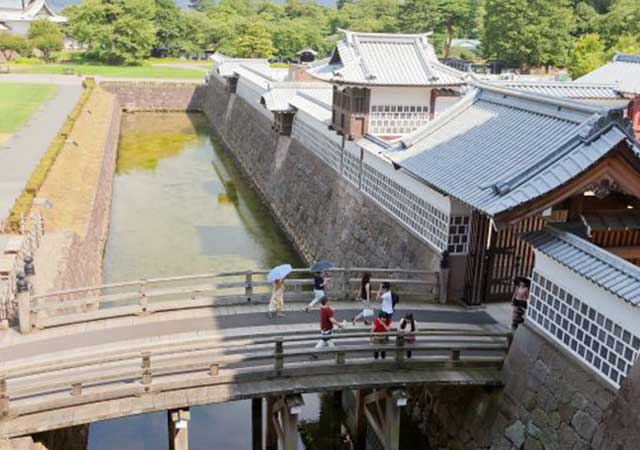
Construction of Kanazawa Castle began in 1580 on the orders of Sakuma Morimasa, a vassal of Oda Nobunaga. The castle was built on the site of the Ikko-ikki sect's Oyama Gobo temple, which is why it is sometimes called Oyama Castle. Morimasa managed to build several moats and begin construction of a castle town. However, after his defeat at the Battle of Shizugatake in 1583, he was executed, and ownership of the castle passed to Maeda Toshiie (1538–1599).
-
Nakatsu Castle
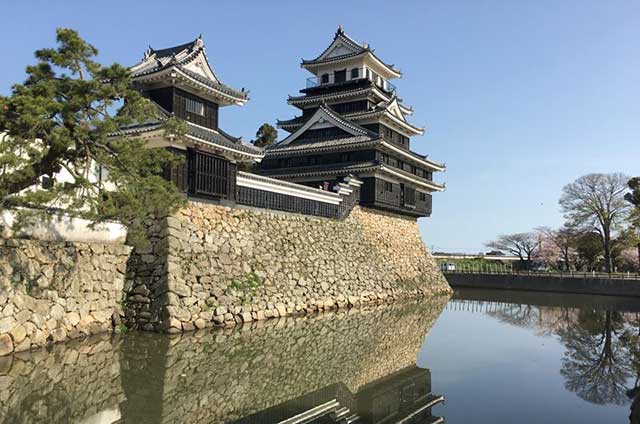
Kuroda Yoshitaka (1546–1604) was one of the closest advisors to the legendary military commander Toyotomi Hideyoshi. He took part in key military campaigns of the late 16th century, including the campaign against Shikoku in 1585 and the campaign against Kyushu in 1587. Later, during the second campaign in Korea, Yoshitaka served as chief advisor to the commander of the invasion forces, Kobayakawa Hideaki. After Hideyoshi's death, he swore allegiance to Tokugawa Ieyasu, thereby securing his influence and patronage under Japan's new leader.

